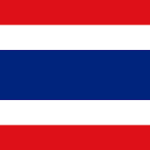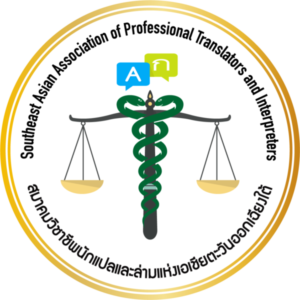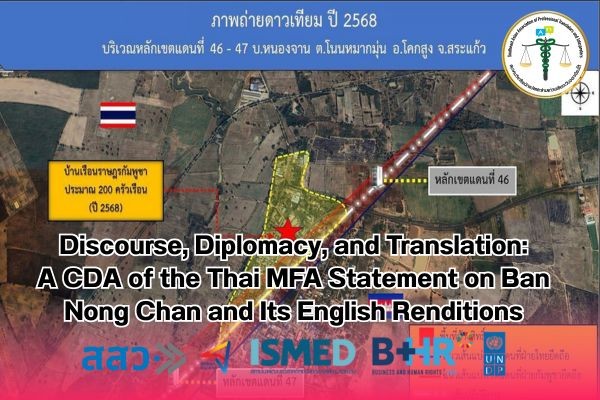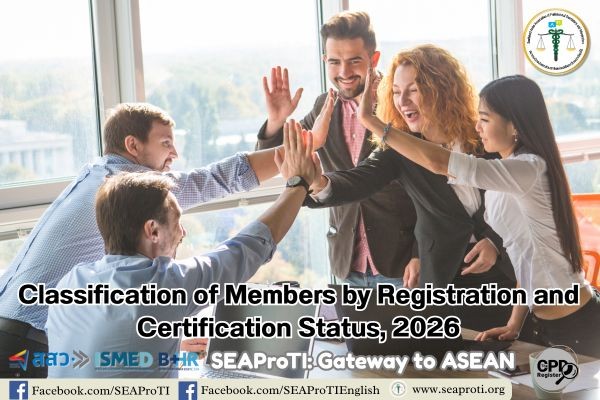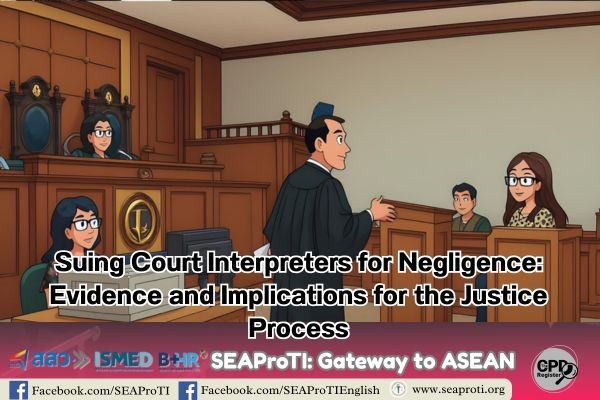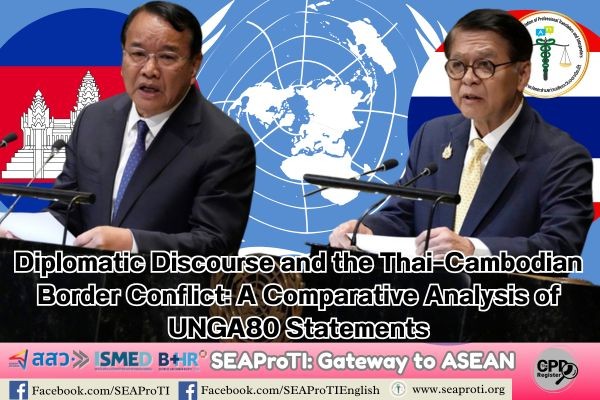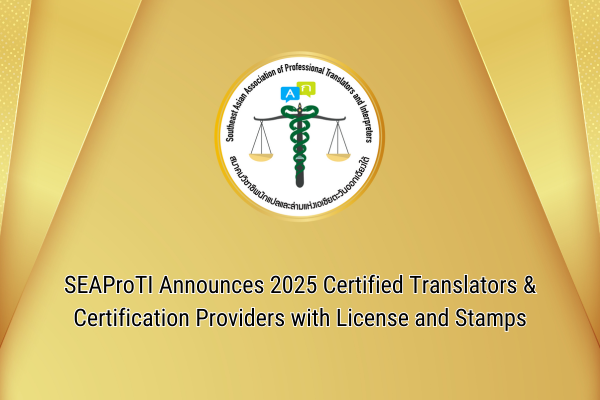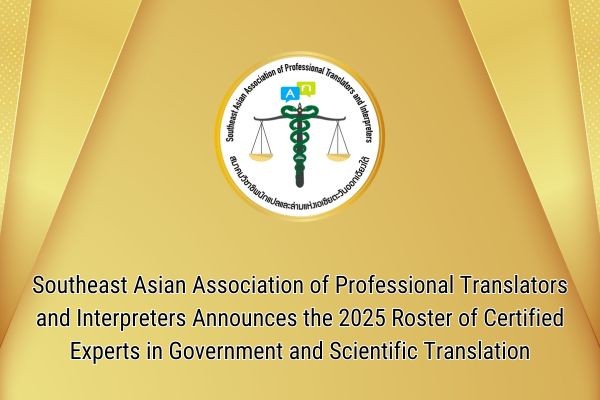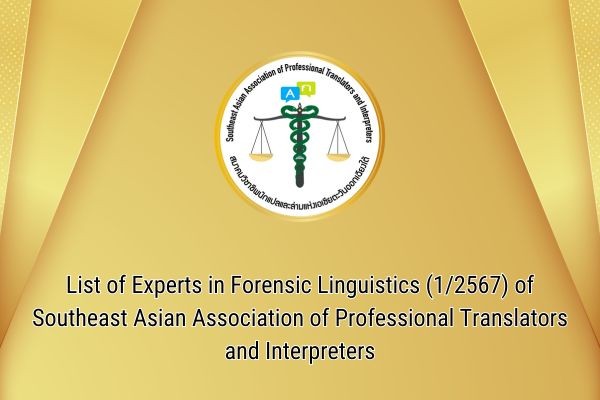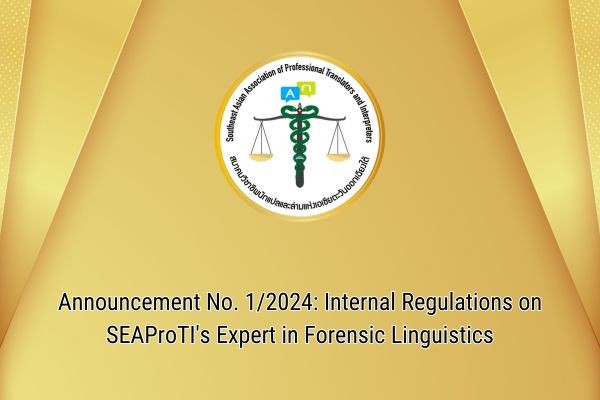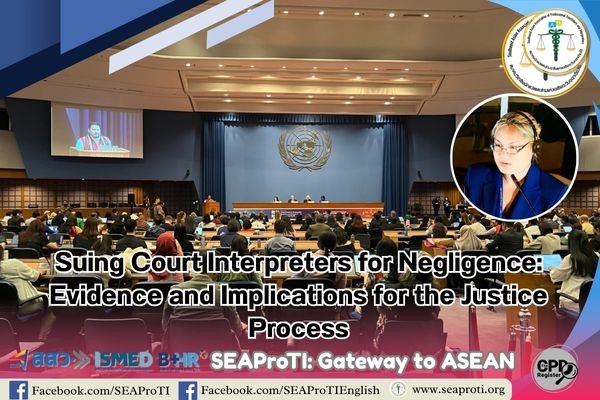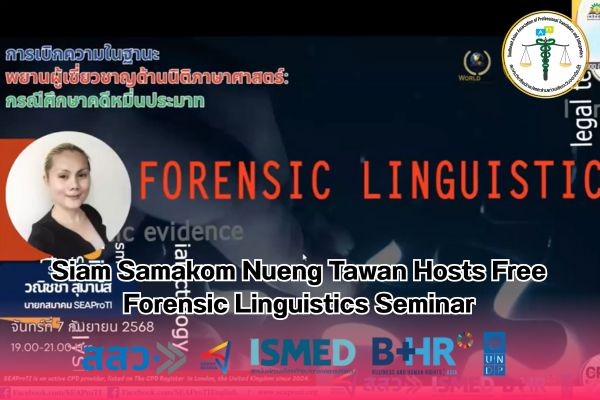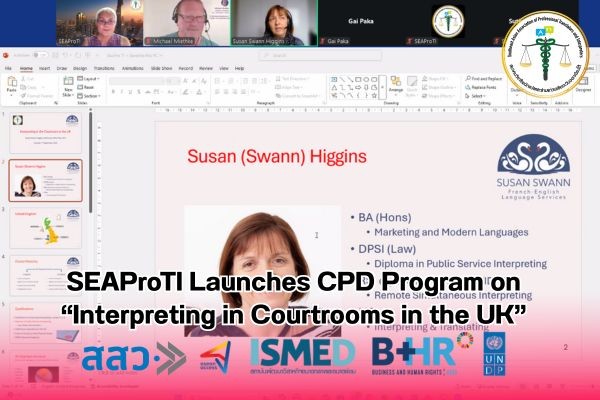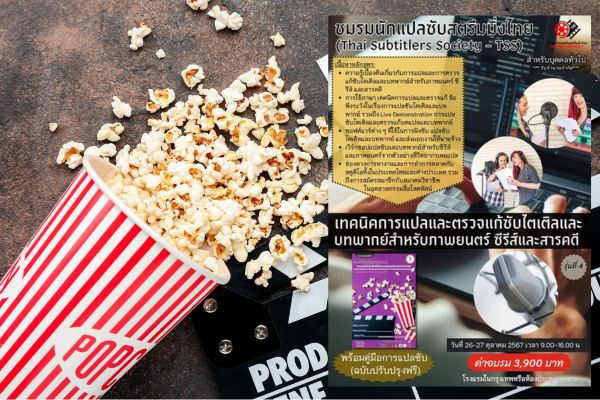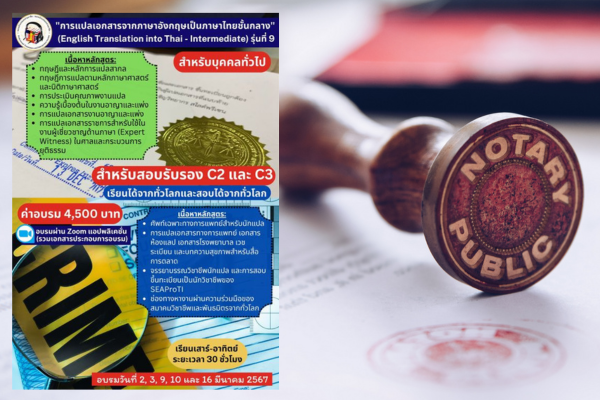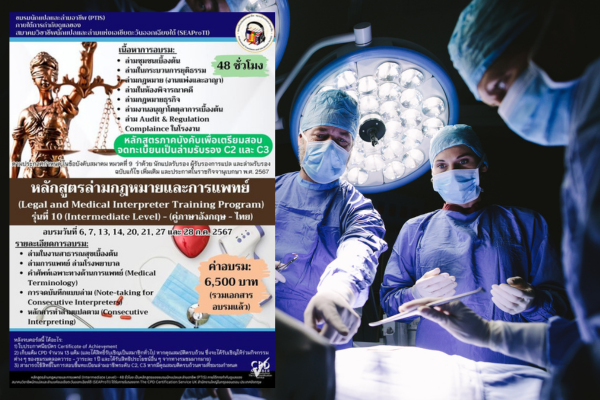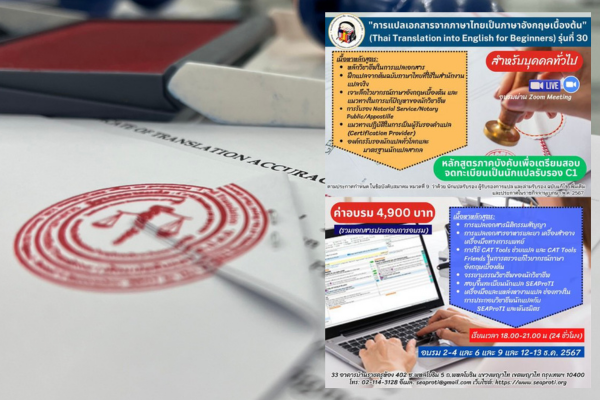Discourse, Diplomacy, and Translation:
A CDA of the Thai MFA Statement on Ban Nong Chan and Its English Renditions
Author: Wanitcha Sumanat, president of the Southeast Asian Association of Professional Translators and Interpreters
20 August 2025, Bangkok – This article examines the Thai Ministry of Foreign Affairs’ (MFA) statement concerning Ban Nong Chan, Sa Kaeo Province, through the lens of Critical Discourse Analysis (CDA) and translation quality assessment. The analysis highlights how discourse strategies construct Thailand’s legitimacy while framing Cambodia as an aggressor, and how English translations of the statement carry different tonalities. The study further proposes a “diplomatic softening” version of the translation to demonstrate the implications of lexical choices in international communication.
Introduction
Diplomatic statements are not merely neutral reports of events; they are discursive acts aimed at shaping perceptions, constructing legitimacy, and negotiating power (Fairclough, 1995; Chilton, 2004). Translation adds an additional layer of complexity, as linguistic choices in the target language can amplify, soften, or reframe the original message (Bielsa & Bassnett, 2009). This article investigates the MFA statement on Ban Nong Chan, analyzing its discourse strategies and evaluating the English translation in terms of accuracy, fluency, and diplomatic appropriateness.
CDA of the Original Thai Statement
Positive Self-Presentation
- The Thai statement consistently emphasizes restraint, humanitarian traditions, and commitment to bilateral dialogue. Phrases such as “อดกลั้นอย่างสูงสุด” (“utmost restraint”) and “ประเทศเพื่อนบ้านที่ดี” (“good neighbour”) frame Thailand as a responsible and benevolent actor.
Negative Other-Presentation
- Conversely, Cambodia is framed as acting in bad faith: “รุกล้ำดินแดนอย่างไม่ชอบธรรม ผิดกฎหมาย” (“illegal encroachment”) and “สะท้อนถึงเจตนาร้ายที่แท้จริง” (“reflects true malicious intention”). This contrastive strategy aligns with van Dijk’s (1997) model of ideological discourse, where positive self-presentation and negative other-presentation reinforce national legitimacy.
Legitimation Strategies
- The Thai MFA draws on legal and institutional intertextuality by referencing the 2000 MOU and the 2025 Extraordinary General Border Committee (GBC) Meeting, thereby grounding its claims in international agreements. Humanitarian references further serve as moral legitimation, portraying Thailand as compassionate but betrayed.
Translation Quality Assessment
Accuracy
The English version faithfully renders references to agreements and factual details. However, semantic shifts occur:
- “ไม่เพียงแต่ขาดความจริงใจ” → rendered as “not only cynical”. Here, “cynical” conveys sarcasm rather than “lack of sincerity.”
- “ยั่วยุให้เกิดความตึงเครียด” → rendered as “incendiary”, which is more forceful than “provocative.”
Fluency and Register
- The translation demonstrates fluency and uses diplomatic vocabulary (sovereignty and territorial integrity). However, certain lexical items (e.g., malicious intention) are overly harsh for international diplomacy, where “bad faith” would be more conventional.
Implications
- Translation thus not only transmits meaning but also reshapes the discourse. A harsher tone may undermine Thailand’s image as restrained, inadvertently portraying it as accusatory. This illustrates the importance of nuance-sensitive translation in diplomacy (Koskinen, 2011).
Diplomatic Softening: A Proposed Version
To address tonal issues, a “softer” English version was drafted. Key shifts include:
- “incendiary” → “may risk creating unnecessary tension”
- “malicious intention” → “does not reflect the spirit of mutual trust”
- “cynical” → “regrettable”
These modifications retain the core message but align with the international diplomatic register, using terms like regret, goodwill, and mutual trust that convey disapproval without inflammatory overtones.
Discussion
This case underscores three insights:
- Discourse framing in diplomacy relies on binary constructions (“good neighbour” vs. “bad faith actor”), which translation must handle with caution.
- Translation choices shape international perception: lexical intensification can escalate hostility, while softening can preserve diplomatic space.
- CDA is a valuable tool for translation studies, revealing how power, ideology, and identity are encoded and transformed across languages.
Conclusion
The Ban Nong Chan case illustrates how translation is not merely linguistic transfer but a site of diplomatic negotiation. While the Thai MFA’s original discourse asserts legitimacy and condemns encroachment, the English translation risks amplifying hostility. A more nuanced version, employing diplomatic softening, better reflects Thailand’s intended self-image as restrained yet firm. This study affirms the critical role of translators in international relations, where every word carries both linguistic and geopolitical weight.
References
- Bielsa, E., & Bassnett, S. (2009). Translation in Global News. Routledge.
- Chilton, P. (2004). Analysing Political Discourse: Theory and Practice. Routledge.
- Fairclough, N. (1995). Critical Discourse Analysis: The Critical Study of Language. Longman.
- Koskinen, K. (2011). Institutional translation: The art of government by translation. Perspectives: Studies in Translatology, 19(1), 1–21. https://doi.org/10.1080/0907676X.2010.485683
- van Dijk, T. A. (1997). Discourse as interaction in society. In T. A. van Dijk (Ed.), Discourse as Social Interaction (pp. 1–37). Sage.
* About SEAProTI Certified Translators, Translation Certifiers, and Certified Interpreters
The Southeast Asian Association of Professional Translators and Interpreters (SEAProTI) has formally established criteria for the registration of “Certified Translators,” “Translation Certification Providers,” and “Certified Interpreters.” These provisions are codified under Chapters 9 and 10 of the Royal Gazette, published by the Secretariat of the Cabinet, Office of the Prime Minister of the Kingdom of Thailand, dated 25 July 2024, Vol. 141, Part 66 Ngor, p. 100. The Royal Thai Government Gazette
** The Council of State of Thailand has proposed enacting a Royal Decree authorizing registered translators, along with translation certifiers recognized by professional associations or accredited language institutions, to certify translations. (Letter to SEAProTI dated 28 April 2025)..
*** SEAProTI is the first professional association in Thailand and Southeast Asia to establish a certification system for translators, translation certifiers, and interpreters.
Head Office: Baan Ratchakru Building, No. 33, Room 402, Soi Phaholyothin 5, Phaholyothin Road, Phaya Thai Subdistrict, Phaya Thai District, Bangkok 10400, Thailand. Email: hello@seaproti.com Tel.: (+66) 2-114-3128 (Office hours: Monday–Friday, 09:00–17:00)
วาทกรรม การทูต และการแปล:
การวิเคราะห์วาทกรรมเชิงวิพากษ์ของคำแถลงกระทรวงการต่างประเทศไทยเกี่ยวกับบ้านหนองจานและฉบับแปลภาษาอังกฤษ
ผู้เขียน: วณิชชา สุมานัส นายกสมาคมวิชาชีพนักแปลและล่ามแห่งเอเชียตะวันออกเฉียงใต้
20 สิงหาคม 2568, กรุงเทพมหานคร – บทความนี้วิเคราะห์คำแถลงของกระทรวงการต่างประเทศไทย (กต.) เกี่ยวกับบ้านหนองจาน จังหวัดสระแก้ว ภายใต้กรอบการวิเคราะห์วาทกรรมเชิงวิพากษ์ (CDA) และการประเมินคุณภาพการแปล โดยมุ่งเน้นให้เห็นว่ากลยุทธ์ทางวาทกรรมถูกนำมาใช้เพื่อสร้างความชอบธรรมของไทย ขณะเดียวกันก็วางกรอบให้กัมพูชาเป็นฝ่ายผู้รุกราน ทั้งนี้ยังได้ศึกษาฉบับแปลภาษาอังกฤษของคำแถลงที่สะท้อนระดับน้ำเสียงที่แตกต่างกัน และเสนอ “ฉบับนุ่มนวลทางการทูต” เพื่อชี้ให้เห็นถึงผลของการเลือกใช้ถ้อยคำต่อการสื่อสารระหว่างประเทศ
คำแถลงทางการทูตไม่ใช่เพียงรายงานข้อเท็จจริงอย่างเป็นกลาง แต่เป็นการกระทำเชิงวาทกรรมที่มุ่งกำหนดการรับรู้ สร้างความชอบธรรม และต่อรองอำนาจ (Fairclough, 1995; Chilton, 2004) การแปลยิ่งเพิ่มความซับซ้อน เนื่องจากการเลือกถ้อยคำในภาษาปลายทางสามารถทำให้สารเดิมเข้มขึ้น อ่อนลง หรือถูกจัดกรอบใหม่ (Bielsa & Bassnett, 2009) บทความนี้มุ่งวิเคราะห์คำแถลงของกต.เกี่ยวกับบ้านหนองจาน โดยศึกษากลยุทธ์วาทกรรม และประเมินการแปลภาษาอังกฤษทั้งในด้านความถูกต้อง ความลื่นไหล และความเหมาะสมเชิงการทูต
การวิเคราะห์ CDA ของถ้อยแถลงภาษาไทยต้นฉบับ
การสร้างภาพลักษณ์บวกของตนเอง
คำแถลงของไทยเน้นย้ำถึงความอดกลั้น ประเพณีด้านมนุษยธรรม และความมุ่งมั่นต่อการเจรจาทวิภาคี วลีอย่าง “อดกลั้นอย่างสูงสุด” และ “ประเทศเพื่อนบ้านที่ดี” ช่วยสร้างภาพลักษณ์ว่าไทยเป็นผู้แสดงบทบาทที่มีความรับผิดชอบและเป็นมิตร
การสร้างภาพลักษณ์เชิงลบของผู้อื่น
- ในทางตรงกันข้าม กัมพูชาถูกจัดวางให้เป็นฝ่ายไม่สุจริต เช่น “รุกล้ำดินแดนอย่างไม่ชอบธรรม ผิดกฎหมาย” และ “สะท้อนถึงเจตนาร้ายที่แท้จริง” กลยุทธ์เปรียบต่างนี้สอดคล้องกับแนวคิดของ van Dijk (1997) ว่าด้วยการสร้างภาพลักษณ์เชิงอุดมการณ์ โดยการนำเสนอด้านบวกของตนเองและด้านลบของคู่กรณีเพื่อเสริมความชอบธรรมให้กับชาติ
กลยุทธ์การสร้างความชอบธรรม
- กต. อ้างอิงกรอบทางกฎหมายและสถาบันระหว่างประเทศ เช่น บันทึกความเข้าใจปี 2543 และการประชุมคณะกรรมการชายแดนทั่วไป (GBC) วิสามัญปี 2568 เพื่อยืนยันความชอบธรรม นอกจากนี้การอ้างถึงเหตุผลด้านมนุษยธรรมยังทำหน้าที่เป็นการสร้างความชอบธรรมทางศีลธรรม โดยแสดงให้เห็นว่าไทยเป็นฝ่ายมีเมตตาแต่กลับถูกหักหลัง
การประเมินคุณภาพการแปล
ความถูกต้อง
ฉบับภาษาอังกฤษถ่ายทอดการอ้างอิงถึงข้อตกลงและข้อเท็จจริงได้อย่างครบถ้วน แต่ความหมายมีการคลาดเคลื่อนบางส่วน เช่น
- “ไม่เพียงแต่ขาดความจริงใจ” → แปลเป็น “not only cynical” ซึ่ง “cynical” เน้นความประชดประชันมากกว่าการ “ขาดความจริงใจ”
- “ยั่วยุให้เกิดความตึงเครียด” → แปลเป็น “incendiary” ซึ่งแรงกว่า “provocative”
ความลื่นไหลและระดับภาษา
- การแปลใช้ถ้อยคำทางการทูตได้ดี เช่น “sovereignty” และ “territorial integrity” แต่บางคำ (เช่น “malicious intention”) มีน้ำเสียงรุนแรงเกินไป ในขณะที่ถ้อยคำทางการทูตสากลมักใช้คำที่เบากว่า เช่น “bad faith”
ผลกระทบ
- การแปลจึงไม่เพียงถ่ายทอดความหมาย แต่ยังเปลี่ยนโครงสร้างวาทกรรม น้ำเสียงที่รุนแรงอาจลดทอนภาพลักษณ์ของไทยว่าเป็นฝ่ายอดกลั้น และทำให้ดูเป็นผู้กล่าวหาแทน แสดงให้เห็นถึงความสำคัญของการแปลที่คำนึงถึงความละเอียดอ่อนทางการทูต (Koskinen, 2011)
ฉบับนุ่มนวลทางการทูต: ข้อเสนอ
เพื่อแก้ปัญหาน้ำเสียงรุนแรง จึงได้ร่างฉบับภาษาอังกฤษที่นุ่มนวลขึ้น โดยมีการเปลี่ยนแปลงสำคัญ เช่น
- “incendiary” → “may risk creating unnecessary tension”
- “malicious intention” → “does not reflect the spirit of mutual trust”
- “cynical” → “regrettable”
การปรับนี้ยังคงสารหลักไว้ แต่ใช้ถ้อยคำทางการทูต เช่น regret, goodwill, mutual trust ซึ่งแสดงความไม่พอใจโดยไม่ใช้คำที่ยั่วยุ
อภิปราย
กรณีนี้สะท้อน 3 ประเด็นหลัก:
- การจัดกรอบวาทกรรมทางการทูตมักใช้โครงสร้างแบบทวิภาค (“เพื่อนบ้านที่ดี” vs. “ผู้ไม่สุจริต”) ซึ่งการแปลต้องระมัดระวัง
- การเลือกคำแปลมีผลต่อภาพลักษณ์ระหว่างประเทศ: การใช้ถ้อยคำแรงอาจยกระดับความขัดแย้ง ขณะที่การลดทอนน้ำเสียงสามารถรักษาพื้นที่ทางการทูตได้
- CDA เป็นเครื่องมือที่มีคุณค่าในงานด้านการแปล เพราะช่วยให้เห็นอำนาจ อุดมการณ์ และอัตลักษณ์ที่ถูกเข้ารหัสและเปลี่ยนแปลงระหว่างภาษา
สรุป
กรณีบ้านหนองจานชี้ให้เห็นว่า การแปลไม่ใช่เพียงการถ่ายทอดทางภาษา แต่เป็นการเจรจาทางการทูต คำแถลงของกต. มีเป้าหมายในการยืนยันความชอบธรรมและประณามการรุกล้ำ แต่ฉบับแปลภาษาอังกฤษบางตอนกลับเสี่ยงต่อการทำให้น้ำเสียงรุนแรงขึ้น การจัดทำฉบับที่นุ่มนวลกว่าจึงสะท้อนภาพลักษณ์ของไทยว่า “อดกลั้นแต่มั่นคง” ได้เหมาะสมกว่า บทความนี้ยืนยันบทบาทสำคัญของนักแปลในความสัมพันธ์ระหว่างประเทศ ที่ซึ่งทุกถ้อยคำมีน้ำหนักทั้งทางภาษาและภูมิรัฐศาสตร์
บรรณานุกรม
- Bielsa, E., & Bassnett, S. (2009). Translation in Global News. Routledge.
- Chilton, P. (2004). Analysing Political Discourse: Theory and Practice. Routledge.
- Fairclough, N. (1995). Critical Discourse Analysis: The Critical Study of Language. Longman.
- Koskinen, K. (2011). Institutional translation: The art of government by translation. Perspectives: Studies in Translatology, 19(1), 1–21. https://doi.org/10.1080/0907676X.2010.485683
- van Dijk, T. A. (1997). Discourse as interaction in society. In T. A. van Dijk (Ed.), Discourse as Social Interaction (pp. 1–37). Sage.
เกี่ยวกับนักแปลรับรอง ผู้รับรองการแปล และล่ามรับรองของสมาคมวิชาชีพนักแปลและล่ามแห่งเอเชียตะวันออกเฉียงใต้
* สมาคมวิชาชีพนักแปลและล่ามแห่งเอเชียตะวันออกเฉียงใต้ (SEAProTI) ได้ประกาศหลักเกณฑ์และคุณสมบัติผู้ที่ขึ้นทะเบียนเป็น “นักแปลรับรอง (Certified Translators) และผู้รับรองการแปล (Translation Certification Providers) และล่ามรับรอง (Certified Interpreters)” ของสมาคม หมวดที่ 9 และหมวดที่ 10 ในราชกิจจานุเบกษา ของสำนักเลขาธิการคณะรัฐมนตรี ในสำนักนายกรัฐมนตรี แห่งราชอาณาจักรไทย ลงวันที่ 25 ก.ค. 2567 เล่มที่ 141 ตอนที่ 66 ง หน้า 100 อ่านฉบับเต็มได้ที่: นักแปลรับรอง ผู้รับรองการแปล และล่ามรับรอง
** สำนักคณะกรรมการกฤษฎีกาเสนอให้ตราเป็นพระราชกฤษฎีกา โดยกำหนดให้นักแปลที่ขึ้นทะเบียน รวมถึงผู้รับรองการแปลจากสมาคมวิชาชีพหรือสถาบันสอนภาษาที่มีการอบรมและขึ้นทะเบียน สามารถรับรองคำแปลได้ (จดหมายถึงสมาคม SEAProTI ลงวันที่ 28 เม.ย. 2568)
*** สมาคมวิชาชีพนักแปลและล่ามแห่งเอเชียตะวันออกเฉียงใต้ เป็นสมาคมวิชาชีพแห่งแรกในประเทศไทยและภูมิภาคเอเชียตะวันออกเฉียงใต้ที่มีระบบรับรองนักแปลรับรอง ผู้รับรองการแปล และล่ามรับรอง
สำนักงานใหญ่: อาคารบ้านราชครู เลขที่ 33 ห้อง 402 ซอยพหลโยธิน 5 ถนนพหลโยธิน แขวงพญาไท เขตพญาไท กรุงเทพมหานคร 10400 อีเมล: hello@seaproti.com โทรศัพท์: (+66) 2-114-3128 (เวลาทำการ: วันจันทร์–วันศุกร์ เวลา 9.00–17.00 น.)
